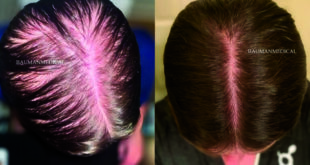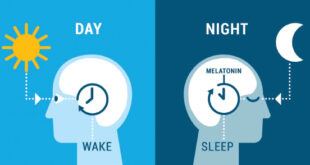Although many people associate orthodontic treatment with adolescence, Boca Raton orthodontist Dr. Minelle Tendler says that orthodontists can spot subtle problems with jaw growth or with teeth much earlier, when the primary or “baby” teeth are present.
Parents may incorrectly assume they must wait until a child has all of his or her permanent teeth before seeing an orthodontist. However, the American Association of Orthodontists (AAO) recommends that every child get a check-up with an orthodontist no later than age 7.
“I can’t overemphasize how important it is that parents understand the value of an orthodontic examination,” says Dr. Tendler. “By age 7, enough permanent teeth (first permanent molars and upper/lower incisors) have arrived for an orthodontist to evaluate relationships developing between teeth, jaw and bite. Orthodontists can determine what, if anything is awry and needs attention.
“An early visit to the orthodontist can ease a parent’s mind, too,” notes Dr. Tendler. “As a mother, I would like to know if there is anything that can be done early, that will be in my child’s best interest and that could save him/her months of treatment or a more complicated treatment in the future. Our recommendation may simply be ‘let’s wait and see’ while the face and jaws continue to grow”. She explains it is not about making teeth look perfectly straight at an early age, but about evaluating the foundation of the bite (spacing of the teeth and jaw relationships) and identifying problems that are better treated sooner rather than later.
When no early intervention is required, patients at Tendler Orthodontics are placed on “alignment”, which is a six-month recall program. While in this program, the patient’s oral and facial growth and development is monitored to assess the need for orthodontics in the future. “Not only does it help identify the best time for orthodontic intervention, which varies in every patient, but our recall program also works as a great educational tool for parents and patients alike” Dr. Tendler notes.
Some of the more readily apparent conditions that indicate the need for an examination include:
• early or late loss of baby teeth
• missing or extra permanent teeth
• difficulty in chewing, biting or speech
• mouth breathing
• thumb sucking or other oral habits, including tongue thrusting
• crowding, misplaced or blocked-out teeth
• jaws that shift or make sounds
• crossbites
• teeth that meet abnormally, or don’t meet at all
• facial imbalance or asymmetry
• jaws that are too far forward or back (overbites or underbites)
• grinding or clenching of the teeth.
In many of these cases, the issue may be resolved completely with an initial, interceptive phase of treatment. For example, interceptive treatment can be beneficial for an underbite or a narrow upper arch, problems that are easier to correct while the jaw is still growing. Treating patients as young as 7 or 8 years old with a “palatal expander” widens the upper jaw, eliminates crossbites and produces upper teeth that line up better with the lower teeth. This type of early intervention routinely makes a second round of treatment, when the patient is a teenager, quicker and easier.
Overbites are a common concern for parents as well. Dr. Tendler notes that protrusive teeth can be prone to injury, especially if they are not behind the confinement of the lips when the patient’s lips are at rest. “In those cases, and especially in a child that is involved in sports, an initial phase of braces would be ideal to move those teeth into a better position and protect them from harm.” In addition, sometimes there are psychological reasons for correcting crooked or “buck teeth” early: a child may be getting teased and may become self-conscious, refusing to smile or speak out loud. “It has become increasingly clear to the scientific and lay communities that health problems of all sorts, psychological and oral health inclusive, can be prevented if a healthy environment is present during a child’s formative years. A preventative measure to improve a patient’s overall psychosocial wellbeing and health can often be wearing braces or an orthodontic appliance at a young age”.
Dr. Tendler explains that it is important to remember that although the word “early” is associated with treatment at ages 7-10, it is really about intervening at the right time in order to intercept problems. “We have a window of opportunity to modify the bone as it’s growing, and it’s through the research and experience from our professional community that we have realized that for a particular group of patients it’s better to start orthodontic treatment when they are undergoing significant growth spurts. If a patient has a skeletal discrepancy it is imperative to start treatment as he/she is actively growing in order to be able to modify the growth and maximize the effect of an orthodontic procedure”. Many times such intervention eliminates the need for full braces later in life, or if orthodontic treatment is still necessary, the process can be shorter, without the need for extractions of permanent teeth and/or other surgical procedures. “At Tendler Orthodontics, the parents and the patient act as a team, and together we design an orthodontic treatment plan that will improve the patient’s bite for the most favorable health, function and esthetics at any age”.
To schedule a complimentary consultation with Dr. Tendler, please call (561) 826-7955 or visit www.tendlerorthodontics.com.
ABOUT
Dr. Minelle Tendler DMD
Dr. Minelle Tendler was born and raised in San Juan, Puerto Rico. As the daughter of two physicians, she knew early on that she had inherited a passion for patient care. She began exploring the idea of dentistry while attending Boston College, where she excelled and graduated with a bachelor’s degree in biology. Dr. Tendler earned her dental degree from the University of Puerto Rico, School of Dental Medicine, graduating magna cum laude and in the top 5 percent of her class. She was selected to be a member of the National Dental Honor Society Omicron Kappa Upsilon for her exceptional academic achievements.
Dr. Tendler completed her residency in orthodontics and dentofacial orthopedics at NOVA Southeastern University College of Dental Medicine and has been practicing orthodontics in South Florida ever since. Dr. Tendler is board eligible for the American Board of Orthodontists.
Dr. Tendler settles for nothing but excellence when it comes to orthodontic treatment. She makes use of the latest technology and newest techniques, devoting many hours a year to continuing education in order to provide her patients with the most up-to-date treatment options and the best possible care. One of Dr. Tendler’s most unique qualities is her authentic Puerto Rican “chispa” or flair. Better described as her enthusiasm for life, Dr. Tendler thrives in her day-to-day interactions with patients and their families, making everyone feel at home and part of the growing Tendler Orthodontics family. That is why she always sits with every patient at every appointment; it’s in her compassionate and caring nature to want to make the orthodontic experience extraordinary.

 South Florida Health and Wellness Magazine Health and Wellness Articles
South Florida Health and Wellness Magazine Health and Wellness Articles




